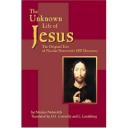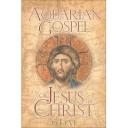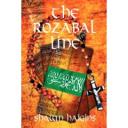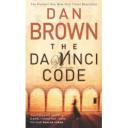The ‘Jesus in India’ theory stirs up excitement
Posted by Leicester Review of Books on November 22, 2007 · 3 Comments
 More than 100 years after the Russian explorer Nicolas Notovitch released his book The Unknown Life of Jesus Christ in which he translated some ancient Tibetan Buddhist scrolls that seemed to indicate that Jesus may have spent his lost years in India, there is a palpable sense of excitement in India once again.
More than 100 years after the Russian explorer Nicolas Notovitch released his book The Unknown Life of Jesus Christ in which he translated some ancient Tibetan Buddhist scrolls that seemed to indicate that Jesus may have spent his lost years in India, there is a palpable sense of excitement in India once again.
The first reason is that William Sees Keenan has decided to produce a $20m movie entitled The Aquarian Gospel to be directed by Drew Heriot. According to the film’s makers the Bible devotes just  seven words to the most formative years of Jesus Christ’s life simply saying “The boy grew in wisdom and stature”.
seven words to the most formative years of Jesus Christ’s life simply saying “The boy grew in wisdom and stature”.
The Aquarian Gospel will attempt to fill that gap by following Christ’s journey to the east where he encounters other traditions, and discovers the principles that are the bedrock of all the world’s great religions.
 The second reason for excitement in Mumbai and Delhi is that a new ‘Da Vinci Code‘ genre novel entitled The Rozabal Line by Shawn Haigins has taken the Jesus in India story and has supposed not only that Jesus spent his lost years in India but also that he survived the crucifixion and returned to India which was also home to one of the lost tribes of Israel.
The second reason for excitement in Mumbai and Delhi is that a new ‘Da Vinci Code‘ genre novel entitled The Rozabal Line by Shawn Haigins has taken the Jesus in India story and has supposed not only that Jesus spent his lost years in India but also that he survived the crucifixion and returned to India which was also home to one of the lost tribes of Israel.
The novel has a controversial theme because it assumes that a Jesus and Mary Magdalene bloodline may exist in troubled Kashmir, along the Indo-Pakistan border, and that this bloodline could possibly be a present-day Islamic holy warrior.
 Keenan’s film will only be ready for release in 2009; Haigins’ novel is available in the U.S. but will only be available in Indian bookstores in early 2008; but both have already created a discernible buzz in India. It will be recalled that India was one of the few places where the screening of The Da Vinci Code had to be temporarily suspended because of public protests and demonstrations.
Keenan’s film will only be ready for release in 2009; Haigins’ novel is available in the U.S. but will only be available in Indian bookstores in early 2008; but both have already created a discernible buzz in India. It will be recalled that India was one of the few places where the screening of The Da Vinci Code had to be temporarily suspended because of public protests and demonstrations.
The ‘Jesus in India’ theory is not new.
The German scholar, Holger Kersten, published Jesus Lived in India in 1994. He claimed that the tomb of a local Kashmiri saint, Yuz Asaf, located in Rozabal (Srinagar, Kashmir) was actually the tomb of Jesus. The researcher Suzanne Olsson also attempted to establish DNA evidence to link the two tomb sites at Rozabal and Murree where Jesus and Mary are supposed to have been buried. Dr. Fida Hassnain, former director of archaeology at the University of Srinagar has also written several books indicating the Yuz Asaf, Yeshua, Issa and Jesus were one and the same. The BBC has reported that the Bnei Menashe from North-Eastern India may actually be one of the lost tribes that reached India via Persia and Afghanistan.
About the Book:
The Rozabal Line
Publisher: Lulu Press
ISBN : 1430327545
Pages: 332
S.R.P.: $16.95
About the Author:
Shawn Haigins holds a Masters degree from Yale, is married, and has a four year old son. The Rozabal Line is his first novel.
Shawn is a voracious reader and loves to travel around the world. He is presently working on a second novel that deals with the concept of reincarnation. Besides this, he is also writing a non-fiction book on the common historical origins of world religions.
Contact:
Shawn Haigins
T: 941-316-4413
E: mail@shawnhaigins.com
Source of Message:
Bostick Communications
Filed under Authors, Books, Publishing, Writing · Tagged with Events, Literary Projects, Literature, Novels, Self Publishing, Spirituality, Stories
There are many evidences to show that Jesus went to India and even died there…all people who go out to find these evidences eventually become convinced of it. Only people who stay home and are too lazy to study anything themselves will never ever find the truth…The truth is out there for all to grab….If only you people knew what scholars are discovering about the historical Jesus, you would realise to what extent we can have false impressions by seeing what Christianity has become today…Visit my blog to find my own research:
http://jesusofeastandwest.blogspot.com/
I was born in Kolkata (Calcutta), West Bengal, India. In my research to investigate my genealogy I came to know that my parents were descendants from the Sadducee faction – sect (2nd.c. BCE to 1st.c. CE) of Judea – Israel and Essenes (2nd.c.BCE to 3rd.c.CE) of Qumran, Israel.
My mother’s genealogy is a direct descendant from historical Jesus of Nazareth, also known as Prophet Issa (Arabic name). I also came to know that my ancestors had left Judea – Israel, after the mock (Jesus in India) crucifixion of historical Jesus of Nazareth, or during or after the destruction of the Second Hebrew Temple known as the “Last Revolt” that occurred on 66 CE and settled in India.
Sujoy Deyasi
If Jesus visited India at all it was during his teenage years. It is reported that Apollonius visited India and this could account for some of the confusion.
According to the Syriac Infancy Gospel Jesus was born during the census not of Quirinius, but of Augustus 28 BCE. This fact is bolstered by numerous noncanonical texts including those by Irenaeus which claims that Jesus was in his 50s at the time of the crucifixion.
Jesus also visited England after 6 CE. The House of God in the great Monastery of Glastonbury, called the Secret of the Lord, is recorded in the Doomsday Book (1088 C.E.). Traditionally, the twelve Hides of Land of the Church of Glastonbury, descend from an original grant given Joseph of Arimathaea, by King Arviragus (10 C.E.-74 C.E.), in the 31st year after the Passion of Christ. Strangely, the date given for the grant is 37 CE. This indicates that the crucixion took place in 6 CE and not 30. However, this was the crucifixion of Judas of Galilee after the raid on Sepphoris and not that of Jesus who then fled to England.
To learn more about how the Romans usurped the ancient scriptures of Yeshu and the Nazorean religion visit: nazoreans.com